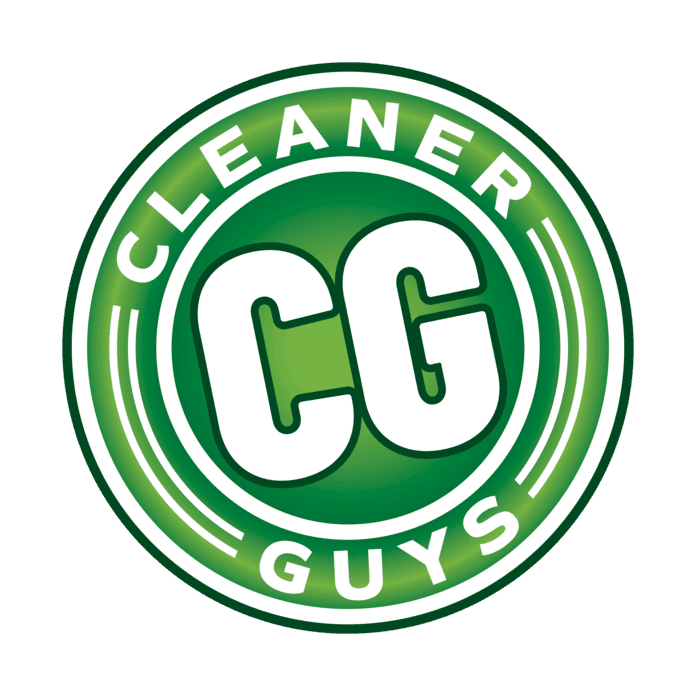Mold is no fun for anyone. It certainly has its uses, from making delicious cheeses to being the source of life-saving drugs like penicillin. But when you find it in your home or business, it is absolutely not welcome. You might’ve discovered mold and want to know how to get rid of it. Or you might be looking to prevent it from ever appearing. Either way, you’re currently seeking to learn where it comes from. That’s very smart of you!
In this compact article, we’ll ask the mold experts at Cleaner Guys to answer the question “What causes mold?”, as well as many others.
Table of Contents
- Where Does Mold Come From?
- What Causes Mold? Top 4 Factors
- Where Does Mold Grow? Top 12 Places
- Is Mold Dangerous?
- How Long Can You Live in a House With Mold?
- What Kills Mold Permanently?
- What to Do If You Find Mold
Where Does Mold Come From?
Mold comes from excess moisture in your home or business, almost always. Moisture is the primary requirement for mold growth. That means that as soon as there is excess moisture in an area, mold will grow. Mold growth can take less than 48 hours, because mold spores are in the air all the time, just like dust and bacteria.
So then, do all houses have mold? Technically, yes, all houses have mold because they have mold spores in the air. But not all houses have mold growth, which is when mold spores take root and spread.
What Causes Mold? Top 4 Factors
The top 4 factors that cause mold are moisture, oxygen, food, and warmth. Only the first 3 are necessary, but mold tends to grow faster where there is warmth and humidity. Mold is a fungus, which is different than both plants and animals. But, just like almost all plants and animals, fungi need oxygen, food, and water to grow. However, the average well-maintained home or business does not have enough moisture present for mold to take root. That’s why mold almost always starts growing after some sort of water damage.
Water damage includes leaks, floods, overflowed toilets, sinks, and bathtubs, water heater malfunctions, pipe bursts, and every other kind of accidental water accident in a home or business. All of these situations introduce a lot more water into the space, and drywall, wood, and textiles quickly soak it up. These water-saturated materials are now a prime breeding ground for mold. It feeds on any organic materials, including drywall, wood, textiles, food crumbs, and anything else it can absorb once it has enough moisture to take root.
Where Does Mold Grow? Top 12 Places
Mold can grow almost anywhere there is moisture, but where are the most common places one might find excess moisture? Because sometimes, mold seems to just appear in your home or business, when you didn’t have any major water damage! Where does it come from? Below are the 12 most common places we find mold.
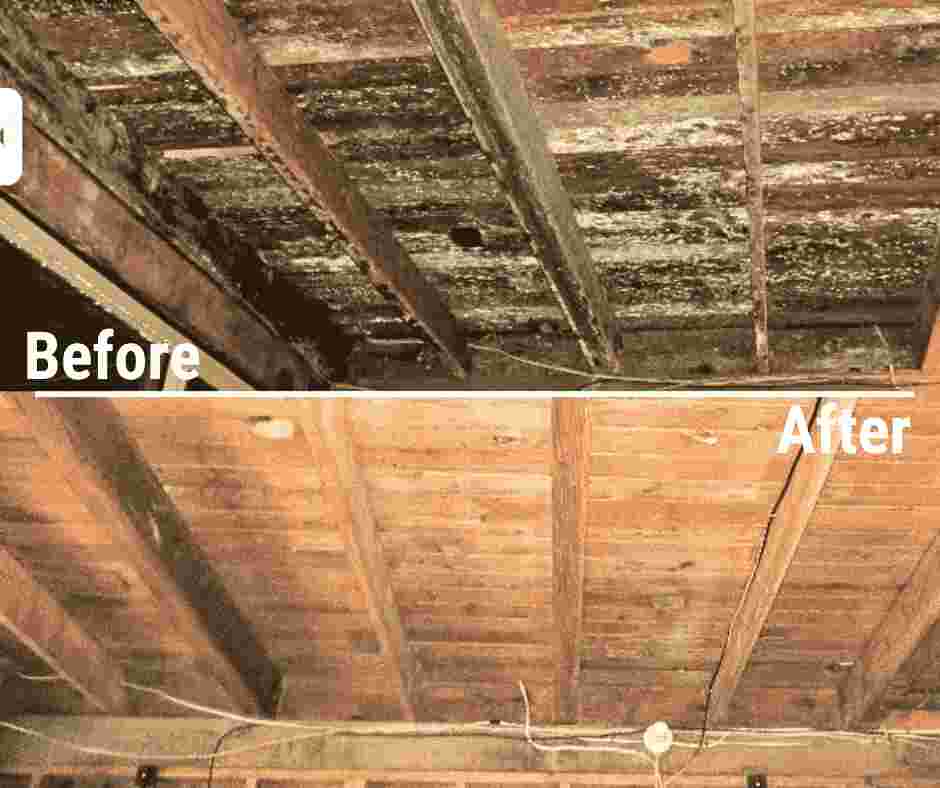
Top 12 Places Where to Look for Mold
- Attics. We get called in for mold in attics all the time. It’s an undisturbed, dark, warm place, and it often sees a lot of moisture from condensation, roof leaks, gutter overflow into the attic space, small animal excrement, and more. Check your attic thoroughly for mold at least once or twice a year!
- Basements. Basements are a very common area for mold growth because they are usually partially or fully underground, and any weakness or crack in the outer walls can let in moisture from the earth outside. Leaking and plumbing malfunctions also often go unnoticed longer in basements, because they’re usually not as occupied as other areas of the house.
- Crawlspaces. Crawlspaces usually get mold either because of rodent infestation or plumbing malfunctions. Some homes have plumbing running in or just above the crawlspace, and if it bursts or leaks, it may go unnoticed for a long time, because no one goes in their crawlspaces. Prolonged moisture leads to mold.
- Refrigerators. We deal with mold and water damage caused by refrigerator water line leaks all the time. They’re the most common appliance that causes water damage. Mold can grow for a long time behind or underneath a refrigerator with a leak, because no one pulls out their refrigerators. Pull yours out every couple of months to check.
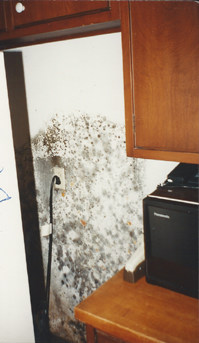
- Inside walls. Mold inside walls occurs when a pipe leaks inside a wall, or when a water damage accident occurs, the drywall soaks up some of the water, and it is not removed immediately. Read this article to learn more about water damage in walls.
- Water heaters. Water heaters are notorious for leaks and bursts that cause water damage. If your water heater every bursts or leaks, make sure to call a restoration company that can handle both water damage restoration and mold remediation.
- Washing machines. Like refrigerators, washing machines also have water supply lines that can leak, causing water damage under or behind the washing machine. Pull your washer out from the wall every other month to check for mold.
- Under-sink cupboards. We deal with mold in under-sink cupboards all the time, because when sink plumbing leaks, no one notices for a long time because they don’t look in their under-sink cupboards very often.
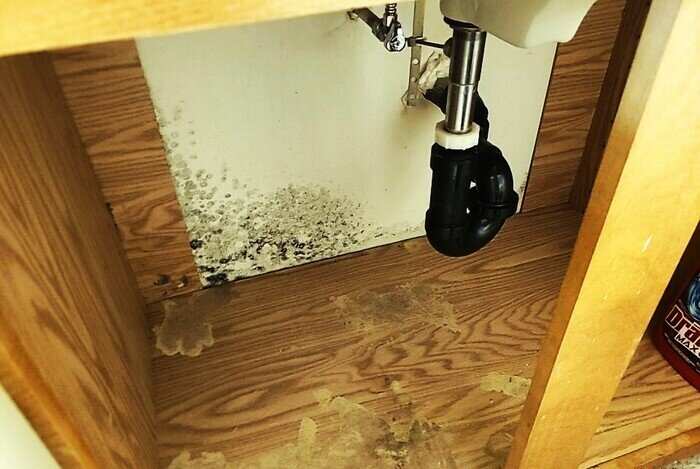
- Ventilation ducting. Unscrew all your AC/heating duct covers and check them regularly! They’re a common breeding ground for molds, because the shafts are warm and can get condensation, and the dust feeds the mold.
- Windows. Windows attract molds because of the condensation they get when it’s cold or humid. However, molds on plastic window frames are usually mildew, and you can learn how to clean it yourself here.
- Bathrooms. Bathrooms are one of the most common places for mold growth that we see in our daily work because bathrooms are the most humid and wet rooms in most buildings. Ventilate your bathroom well when you shower, either with a fan or a window open, and you should be able to avoid mold growth.
- Baseboard trim. Like any wood, baseboard trim will soak up any water near it. But when a minor toilet or sink overflow happens, most people don’t realize that the nearby baseboard trim may have soaked up some of the water. Mold on trim usually grows on the inside, near the wall, but it can be detected by warped, bloated, stained, or smelly baseboard.
This is not an exhaustive list of everywhere you can find mold. For more places to look for mold, see our other articles on where to find mold, here and here.
Is Mold Dangerous?
All mold is bad for your health, but most species of mold are not dangerous. There are a couple of species that are very dangerous, however, such as the toxic black mold Stachybotrys Chartarum. Besides the couple species of toxic mold, almost all of the thousands of species of mold are only allergenic, meaning they can cause mold sickness symptoms, but they are often mild to nonexistent.
To learn how to recognize the symptoms of mold sickness, read this article.
How Long Can You Live in a House With Mold?
Staying in a house infested with mold is generally not advisable. While mold sickness may only cause minor health problems for some, it may cause severe and dangerous reactions in others. If you can’t leave your home for a week or more while the mold is being removed, at least have everyone in the house or apartment live and sleep in a room that’s not infested with mold. Close the door to the room(s) that have mold, and open a window if you can. This will increase ventilation and encourage mold spores to drift out of the home.
What Kills Mold Permanently?
It depends on the type of mold and how large the infected area is. If the fungus you are seeing is actually mildew, it can be fairly easy to clean yourself. However, if your mold is a variety of common mold that roots deeply, including as aspergillus, alternaria, or aureobasidium, and more, it can be much more difficult to successfully remove.
Mold species other than mildew are hard to clean because they tend to root deeply into whatever organic material they grow on. This means that however much mold you can see, there is probably a lot more under the surface that you can’t see.
Some people on the internet claim that bleach and vinegar can be effective DIY remedies to remove mold. We strongly advise you not to try vinegar on areas of growth larger than 1 square foot. We advise you not to try bleach at all. These are not effective methods of mold removal in our decades of experience as mold experts. Learn why you shouldn’t use bleach here. Learn when and how you can use vinegar here.
If you must try to clean the mold yourself for the time being (even though it’s inadvisable), your best bet is a fungicide like Fiberlock Shockwave, which you can buy at a hardware store. We are not affiliated with or sponsored by them in any way, we just use their product in our professional mold removal work, and love it.
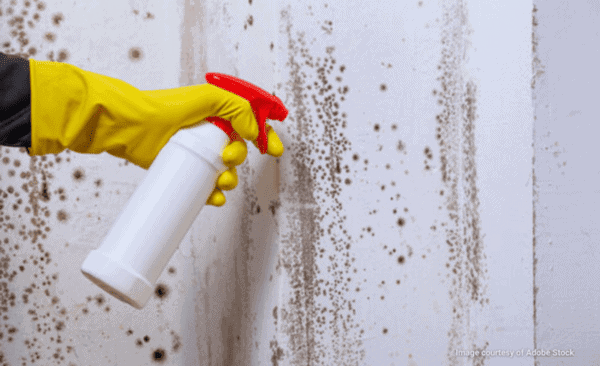
What to Do If You Find Mold
The only 100% foolproof way to be sure you’ve gotten rid of the mold in your apartment is to remove it entirely. This means removing whatever drywall, flooring, wood, or other material the mold is growing on, cleaning the area, and replacing the lost materials with new ones. Please do not attempt to do this kind of mold removal yourself; it should only be performed by mold removal specialists.
For professional guidance on how to choose a trustworthy mold removal company in your area, read this guide.
For a more detailed guide on how to go about mold inspection and mold removal in an apartment with a landlord, read our ultimate guide to dealing with mold in apartments.
Want to know how to prevent mold growth successfully? Click here.
Looking for a more detailed guide to every aspect of the mold removal process? Read this guide.
If you need mold removal in Western Washington State…
If you need professional mold removal in Western Washington State, we encourage you to call Cleaner Guys to help you figure out what to do next! Navigating mold with your insurance, landlord (if applicable), and a mold removal company can be tricky, and we are happy to walk you through it safely. Cleaner Guys is the only mold removal company in the area that boasts award-winning customer service, so you can trust us to have your best interest in mind. Call (360)757-4300 today from the menu at the top of this page.
Disclaimer: This article is for informational purposes only. No part of this article is medical or legal advice, and may not be used as such. For all serious medical matters, consult your doctor. For all serious legal matters, consult your legal advisor. This article contains Cleaner Guys’ experience and opinions only.
